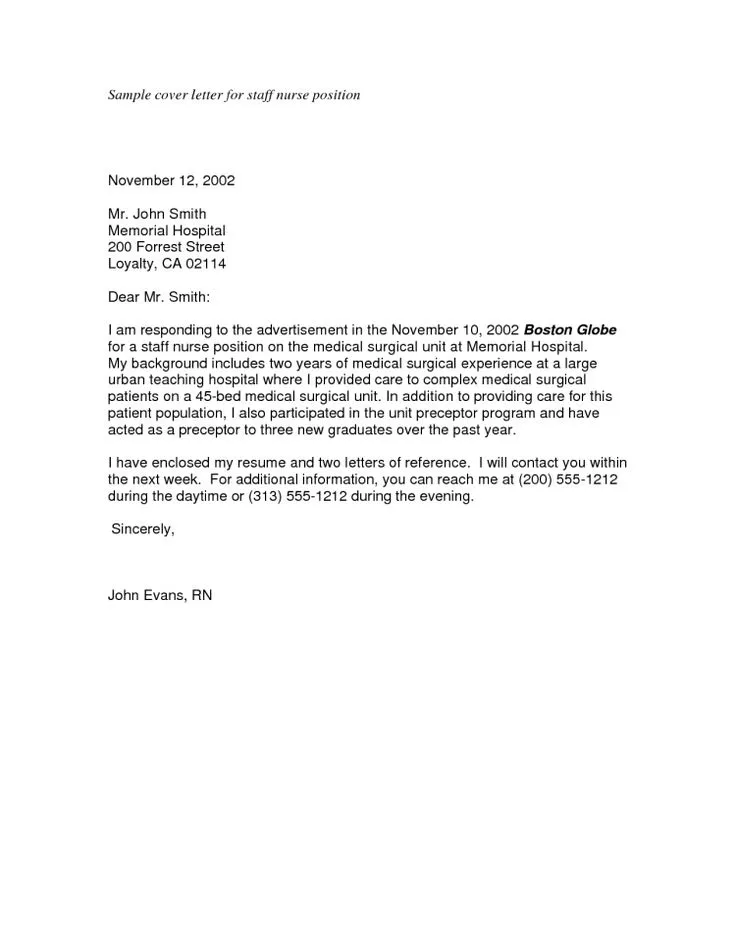Understanding the Importance of a Cover Letter
In the competitive landscape of job applications, a well-crafted cover letter can be your most valuable asset. It’s the first impression you make on a potential employer, and it sets the stage for your resume. Many job seekers often overlook the significance of a cover letter, considering it a mere formality. However, a cover letter provides an opportunity to showcase your personality, express your genuine interest in the position, and highlight how your skills and experiences align with the specific requirements of the job. A cover letter is not just a repetition of your resume, instead, it’s a chance to tell your story, elaborate on your qualifications, and demonstrate why you’re the ideal candidate. This guide will walk you through how to create a stellar cover letter that grabs attention and increases your chances of landing an interview.
Why a Cover Letter Matters
A cover letter serves several vital purposes. It allows you to personalize your application and demonstrate your genuine interest in the company and the specific role. It lets you expand upon your resume by providing additional details, anecdotes, and context for your accomplishments. It’s a platform to address any potential gaps in your experience or explain career transitions. Moreover, a cover letter helps you stand out from the crowd by showcasing your writing skills, attention to detail, and ability to communicate effectively. In essence, it’s a chance to make a strong first impression and persuade the hiring manager that you deserve to be considered for the position. If you want to land your dream job, then a good cover letter is a must have.
How Cover Letters Enhance Your Application
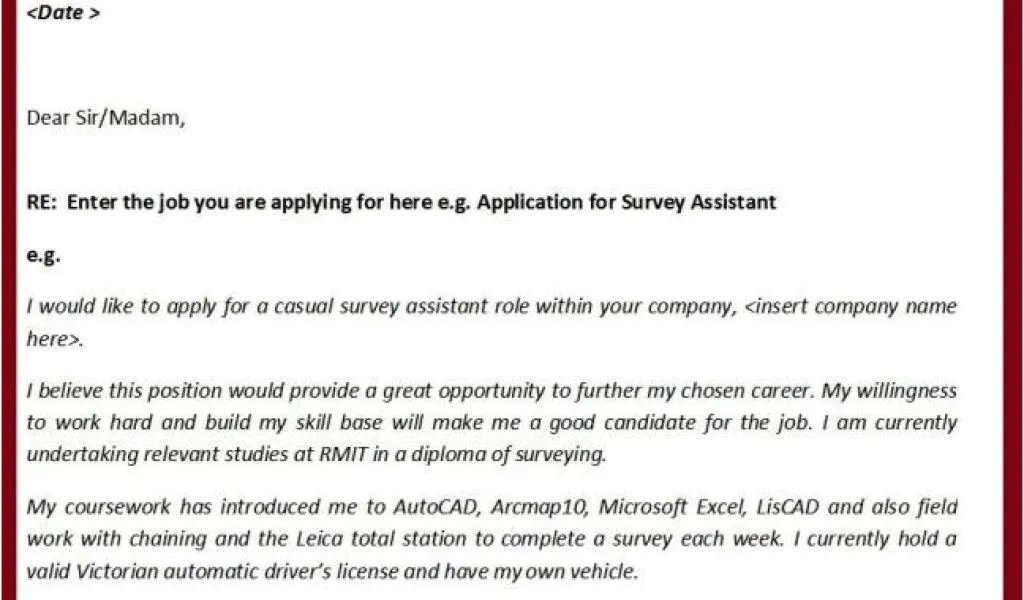
Cover letters enhance your application by offering a glimpse into your personality, demonstrating your communication skills, and showcasing your enthusiasm for the role. They allow you to connect your skills and experiences directly to the job description, highlighting how you can contribute to the company’s success. They also give you the opportunity to address any specific requirements mentioned in the job posting and to emphasize why you are a perfect fit for the position. Furthermore, a well-written cover letter can make you memorable, setting you apart from other applicants who may have similar qualifications on paper. This helps the hiring manager remember you and your unique strengths. A cover letter serves as a powerful tool in helping you grab the reader’s attention, while increasing your chances of being selected for an interview.
Key Components of a Stellar Cover Letter
A stellar cover letter comprises several essential components that work together to create a compelling narrative. Each part plays a crucial role in conveying your qualifications, expressing your interest, and making a lasting impression. Understanding these components is the first step in crafting a cover letter that effectively captures the hiring manager’s attention and highlights your key qualifications. A well-structured cover letter that follows the essential components helps a job seeker to come across as a professional, increasing the chances of getting called for an interview.
Your Contact Information
Start your cover letter with your complete contact information. This typically includes your full name, phone number, email address, and optionally, your LinkedIn profile URL or personal website. Ensure that your contact information is accurate and up-to-date. Place this information at the top of your letter, either aligned to the left or right, depending on your preferred style. This allows the hiring manager to quickly find your contact details if they are interested in reaching out to you. Presenting your contact details clearly and concisely is a vital aspect of making a professional impression. This will allow the hiring manager to contact you easily if they want to offer you an interview.
The Hiring Manager’s Name and Title
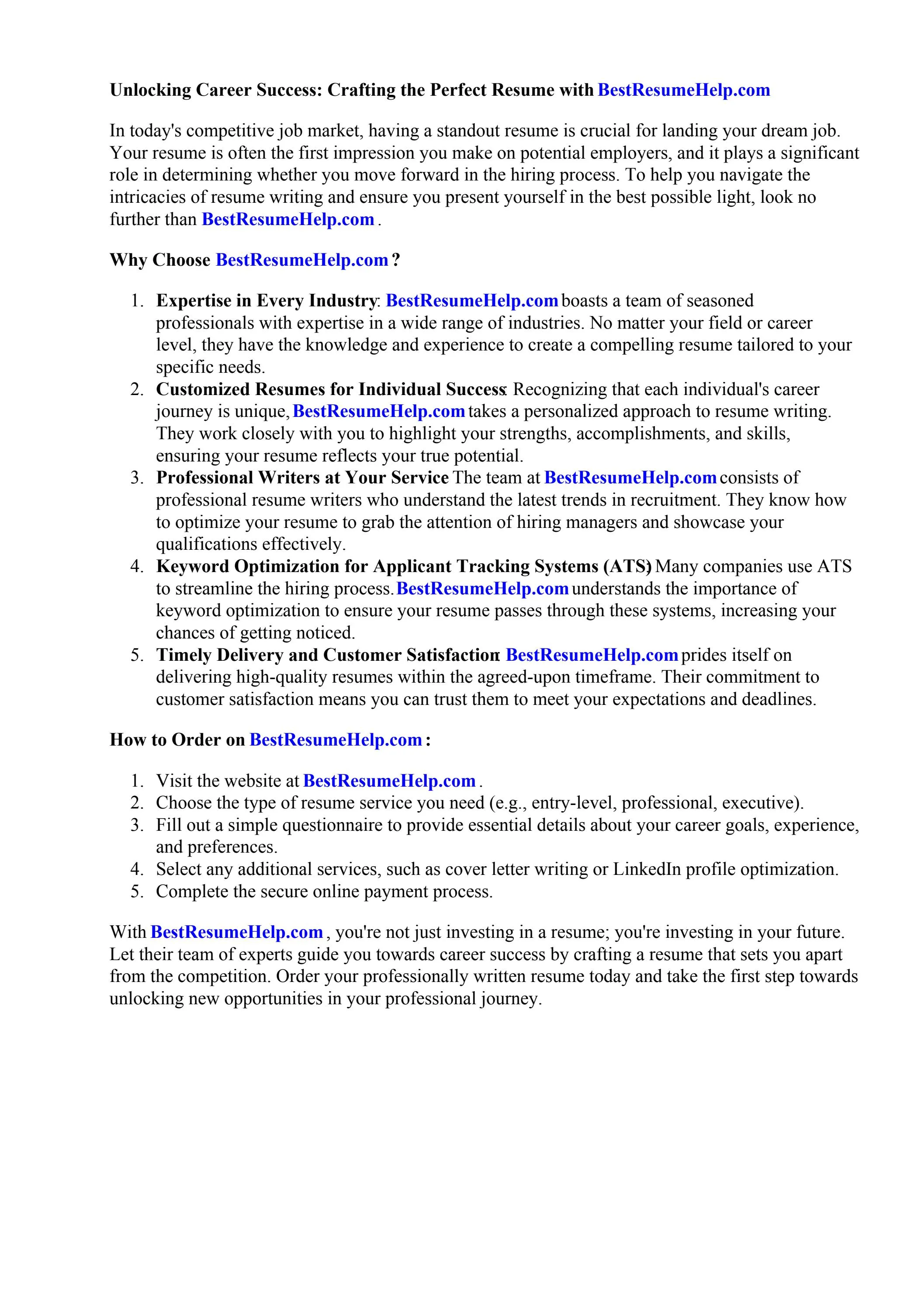
Whenever possible, address your cover letter to a specific person, ideally the hiring manager or the person listed in the job posting. If you can’t find a specific name, research the company’s website or LinkedIn to find the appropriate contact person. Addressing the letter to a specific individual demonstrates that you’ve taken the time to do your research and shows a level of personalization. If you’re unable to find a name, use a professional greeting such as “Dear Hiring Manager” or “Dear [Department Name] Team”. This shows a basic level of personalization. Avoiding generic greetings like “To Whom It May Concern” is crucial, as they lack the personal touch. Addressing the correct person in your cover letter is a key part of making a great first impression.
A Compelling Opening
Your opening paragraph is your chance to grab the hiring manager’s attention. It should be concise, enthusiastic, and clearly state the position you’re applying for. Briefly mention where you saw the job posting, such as a job board or the company’s website. Consider starting with a strong statement that captures your interest, such as expressing your admiration for the company’s work or mentioning a specific project or achievement. Avoid generic openings. Instead, try to convey your personality and demonstrate why you’re excited about the opportunity. This will help the hiring manager to remember you. You should focus on making the hiring manager want to learn more about you.
Highlighting Your Skills and Experiences
The main body of your cover letter should highlight your relevant skills and experiences. Carefully review the job description and identify the key requirements. Then, provide specific examples of how your skills and experiences align with those requirements. Use the STAR method (Situation, Task, Action, Result) to describe your accomplishments and quantify your achievements whenever possible. Show, don’t just tell, by using concrete examples. Explain the challenges you faced, the actions you took, and the positive outcomes you achieved. This will help the hiring manager visualize your contributions and understand the value you can bring to the role. Quantify your accomplishments to emphasize your achievements even further and make sure your cover letter is specific to the job description.
Tailoring Your Letter to the Job Description
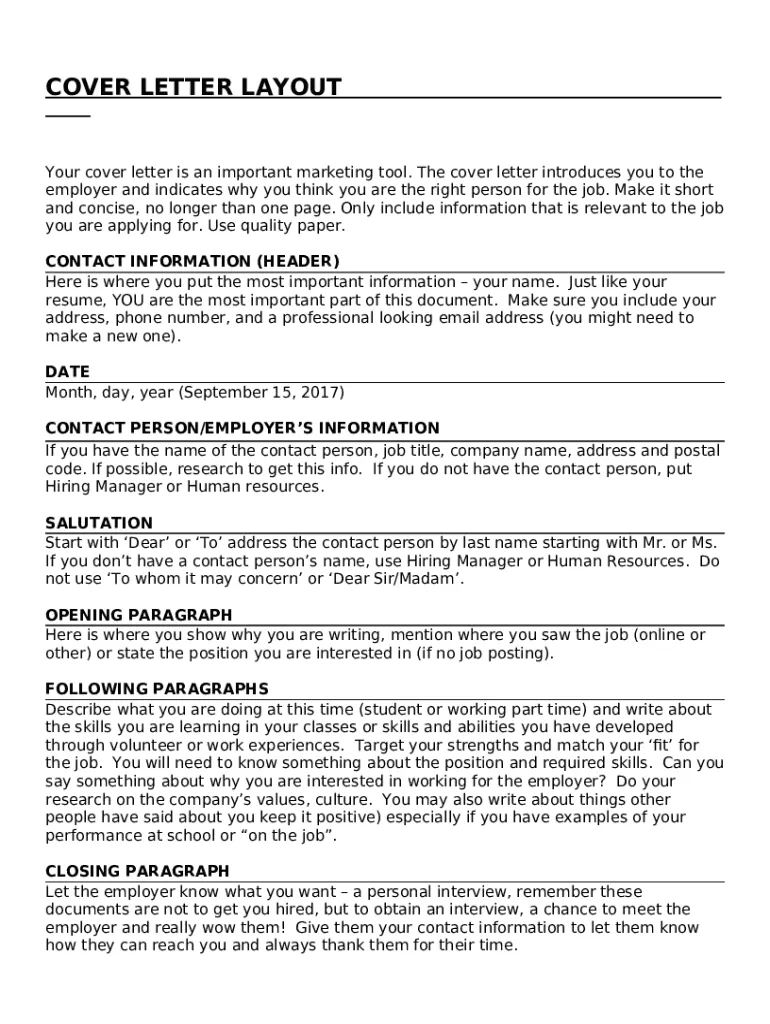
Customizing your cover letter for each job application is essential. Avoid using a generic, one-size-fits-all approach. Instead, carefully read the job description and tailor your letter to match the specific requirements and keywords. Highlight the skills, experiences, and achievements that are most relevant to the position. Show the hiring manager that you understand the role and are prepared to meet its challenges. Mention specific projects, software, or tools that are relevant to the job. Tailoring your cover letter shows you care about the job and that you have the necessary abilities. This greatly increases the chances of you getting the interview.
Quantifying Your Achievements
Whenever possible, quantify your achievements with numbers and data. Instead of saying, “Improved customer satisfaction,” say “Improved customer satisfaction scores by 15% through implementing a new support system.” Numbers make your accomplishments more tangible and demonstrate the impact you’ve had in previous roles. Use metrics such as percentages, dollar amounts, and time frames to provide concrete evidence of your skills and experience. This helps the hiring manager see the tangible results of your work and understand the value you can bring to their organization. Numbers are more powerful than adjectives because it can demonstrate the value that a job seeker provides.
Expressing Enthusiasm and Company Fit
Demonstrate your enthusiasm for the position and the company. Show that you’ve researched the organization and understand its mission, values, and culture. Explain why you are excited about the opportunity and how your skills and interests align with the company’s goals. Mention specific aspects of the company’s work or products that resonate with you. Show the hiring manager that you see yourself fitting into the company and that you are eager to contribute to its success. Expressing enthusiasm and demonstrating company fit are essential for making a lasting impression. If you take the time to demonstrate this during your cover letter, your chances of getting the job greatly increase.
A Strong Closing
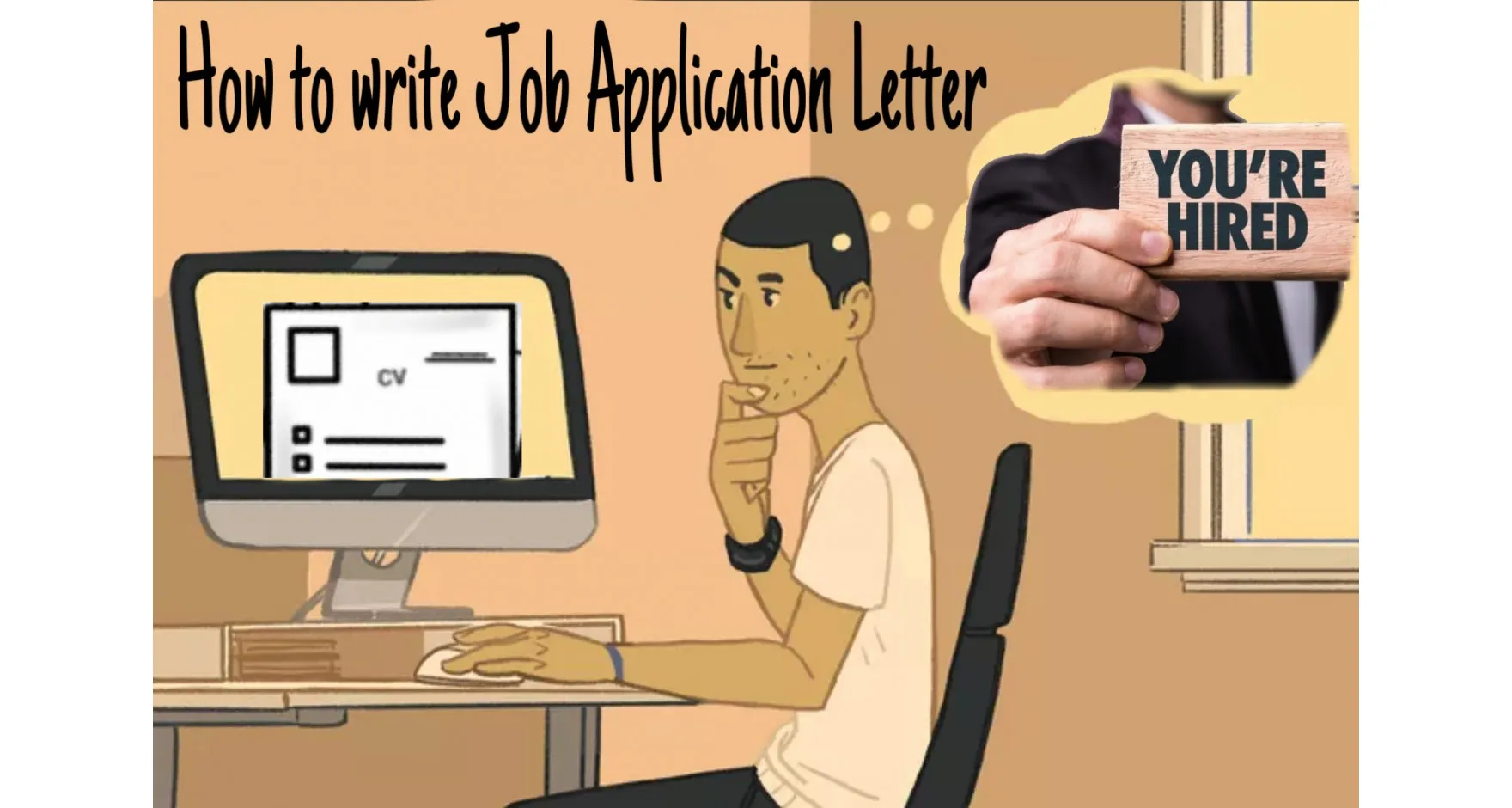
Conclude your cover letter with a strong call to action. Reiterate your interest in the position and express your eagerness to discuss your qualifications further. Thank the hiring manager for their time and consideration. Include a polite statement such as, “I am excited about the opportunity to contribute to [Company Name] and would welcome the opportunity to discuss my qualifications in an interview.” Provide your contact information again, making it easy for the hiring manager to reach you. End with a professional closing such as “Sincerely,” “Best regards,” or “Thank you.” Keep the tone of your conclusion professional and respectful, while reiterating your enthusiasm for the position.
Formatting and Design Best Practices
The formatting and design of your cover letter are as important as the content. A well-formatted letter is easy to read and reflects your professionalism and attention to detail. Poor formatting can make your letter appear unprofessional and difficult to navigate, potentially leading to rejection. Pay close attention to the fonts, spacing, and overall layout to ensure that your letter is visually appealing and easy to read. Simple formatting choices can make a big difference. If you follow this advice, the hiring manager will be able to focus on the contents of your cover letter without getting distracted.
Font Choice and Readability
Choose a professional and easy-to-read font such as Times New Roman, Arial, Calibri, or Helvetica. Use a font size between 10 and 12 points for the body of your text. Ensure that the font is consistent throughout the document. Avoid using overly fancy or decorative fonts that can be difficult to read. Maintain consistent formatting. Use bold or italics sparingly to emphasize key points. Your cover letter should be easy to read. Make the document easy to navigate by using clear formatting and a consistent structure. Avoid unnecessary distractions in order to put a focus on the content of your cover letter.
Length and Structure
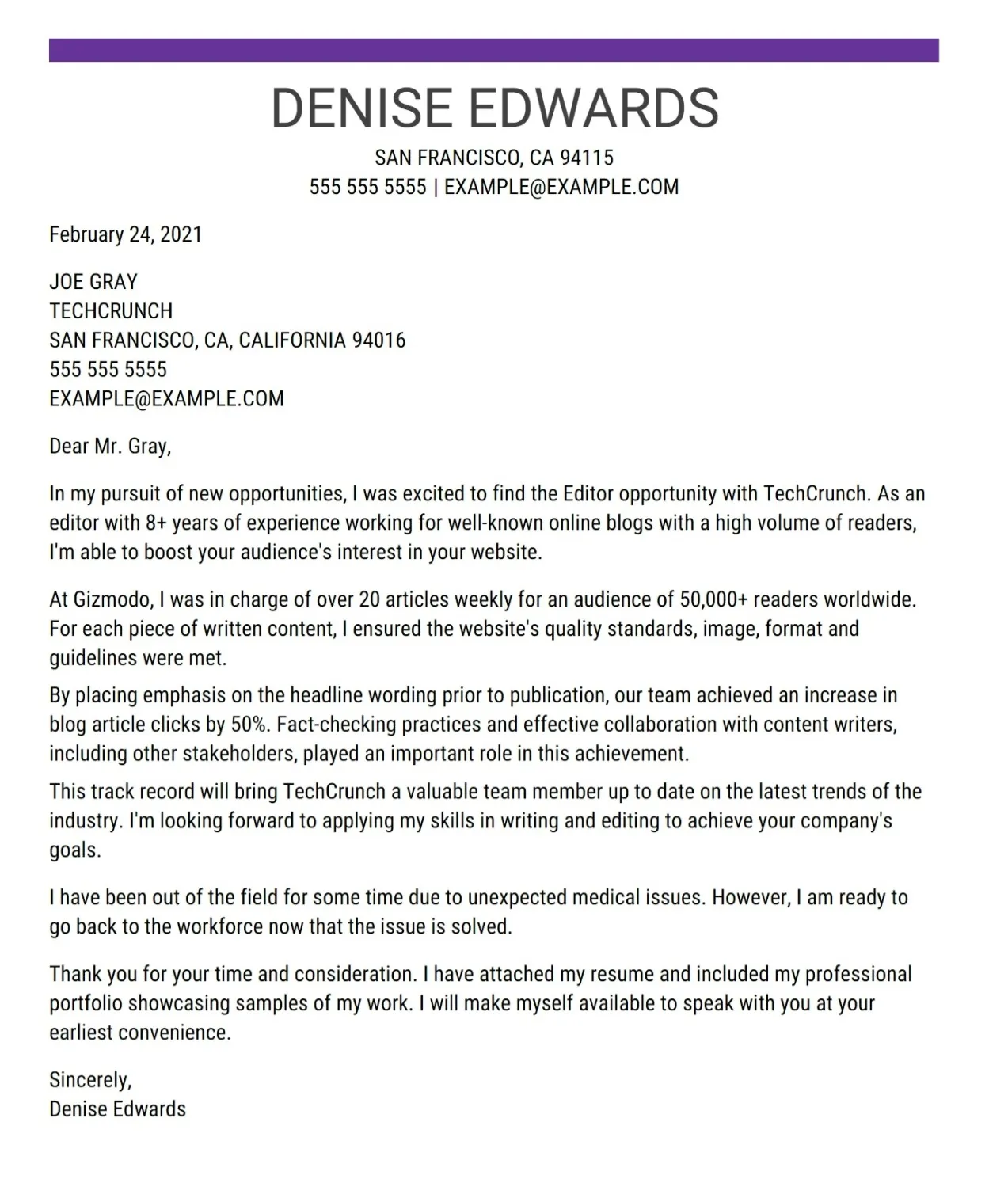
Keep your cover letter concise, ideally no more than one page. Use a standard business letter format with single-spacing and a consistent margin of about 1 inch on all sides. Use clear headings and bullet points to break up long blocks of text and make it easier for the reader to scan. Organize your content logically, following the key components discussed earlier. Ensure a clear structure with an introduction, body paragraphs highlighting your skills and experiences, and a strong conclusion. Organize the cover letter in a manner that makes the hiring manager want to read until the end. A well-organized cover letter can significantly improve the chances of being selected for an interview.
Proofreading and Editing
Thoroughly proofread and edit your cover letter before submitting it. Check for any typos, grammatical errors, and inconsistencies in formatting. Use a grammar checker and spell checker, but also read the letter carefully yourself to catch any errors the software might miss. Consider having a friend, family member, or career advisor review your cover letter to provide feedback and catch any errors you might have overlooked. Pay close attention to the clarity and conciseness of your language. Ensure that your writing is professional and reflects your attention to detail. Proofreading is a critical step. Making even small mistakes may cause the hiring manager to reject your application.
Common Mistakes to Avoid
Avoiding common mistakes in your cover letter is crucial for making a positive impression. These errors can immediately disqualify your application, so being mindful of these pitfalls can help you present yourself as a professional and qualified candidate. A well-crafted cover letter, free of these common errors, can greatly improve the likelihood of you being selected for the job. Below are some of the most common mistakes made when creating a cover letter.
Generic Content
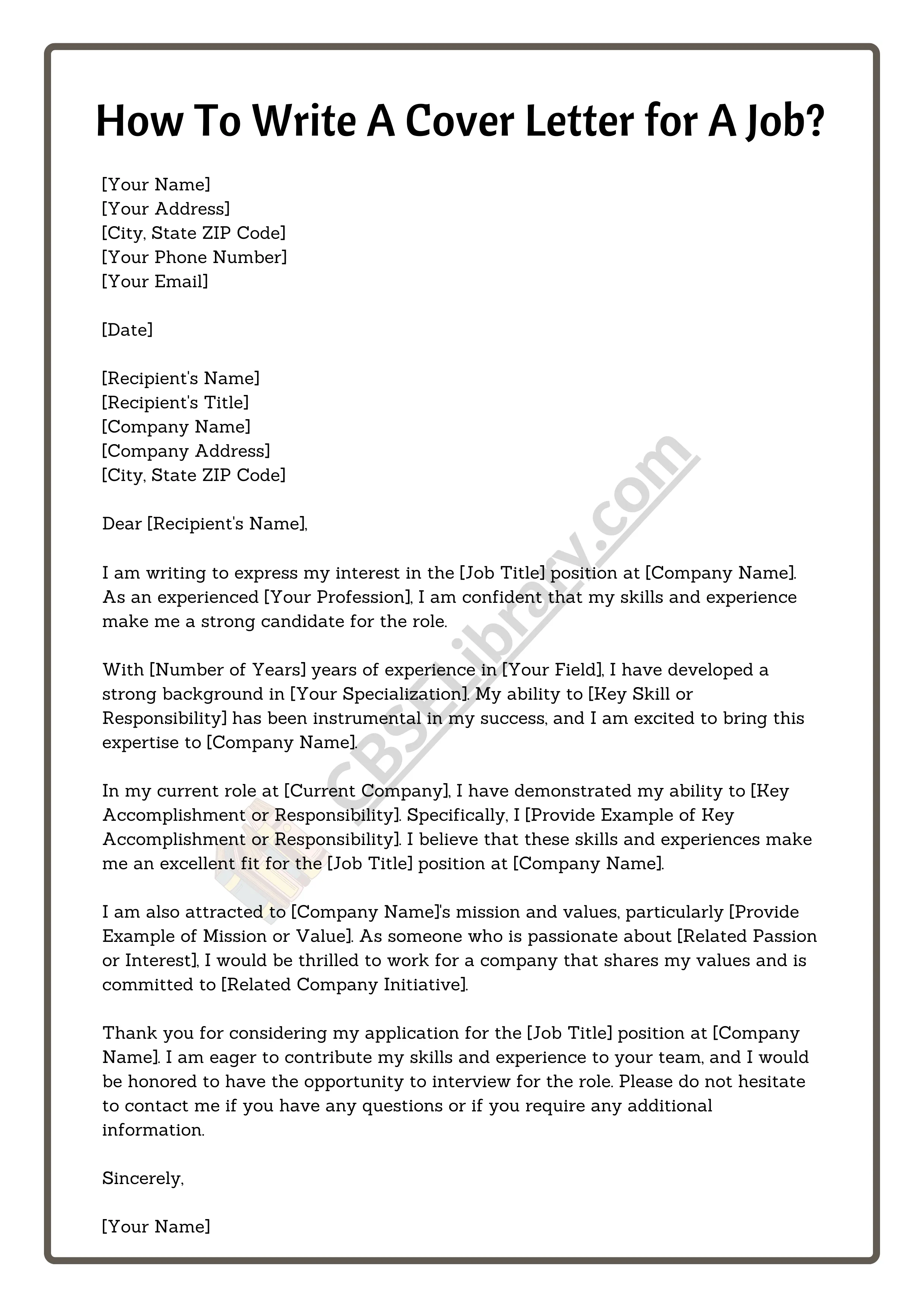
Avoid using generic content that could apply to any job. Tailor your cover letter to each specific position. Show that you’ve researched the company and the role, and that you’ve identified the skills, experiences, and achievements that are most relevant. Don’t recycle the same cover letter for every application. It’s better to have fewer applications that are customized to match the role rather than using a generic cover letter for multiple applications. Hiring managers can easily spot generic letters, and they often view them as a sign of lack of interest or effort. Customized content shows the hiring manager you care and are willing to go the extra mile.
Typos and Grammatical Errors
Typos and grammatical errors can damage your credibility and make you appear unprofessional. Proofread your cover letter multiple times, and use grammar and spell-checking tools to catch any mistakes. Be sure to review your cover letter multiple times, and also have another person review it. Errors can easily slip through, so take the time to ensure your writing is perfect. A cover letter filled with errors may lead the hiring manager to question your attention to detail and writing skills, which are vital for any job. Take the time to proofread, and make sure the contents of your cover letter are high quality and free of any errors.
Overly Formal Language
While it’s important to maintain a professional tone, avoid using overly formal or stuffy language that can sound unnatural. Write in a clear, concise, and conversational style. Use active voice and avoid overly complex sentences. Make your cover letter easy to read and understand. While demonstrating your communication skills is important, make sure the content of the cover letter does not bore the hiring manager. Keep the language interesting, and show your personality. It is often a good idea to show some enthusiasm in your tone, in order to increase the likelihood of you getting the job.
Sending the Cover Letter
When sending your cover letter, follow the instructions provided in the job posting. If the job posting specifies a particular format, such as PDF or Microsoft Word, adhere to those instructions. Ensure that your cover letter is properly formatted and free of any errors before submitting it. Double-check that you’ve attached both your cover letter and resume. Verify that the email address you’re sending your application to is correct. Sending your application through the proper channels and with the correct information ensures that your application arrives without issues. Make sure that the hiring manager receives your cover letter and resume. Before sending your application, it is a good idea to do a final check for any errors or omissions.
In conclusion, crafting a stellar cover letter is a crucial step in any job application. By understanding the importance of a cover letter, incorporating the key components, adhering to formatting best practices, and avoiding common mistakes, you can significantly increase your chances of landing an interview. Remember to tailor your cover letter to each specific job, highlight your skills and experiences, and express your enthusiasm for the opportunity. By following these guidelines, you can create a compelling cover letter that makes a lasting impression and helps you stand out from the competition. Good luck with your job search!
